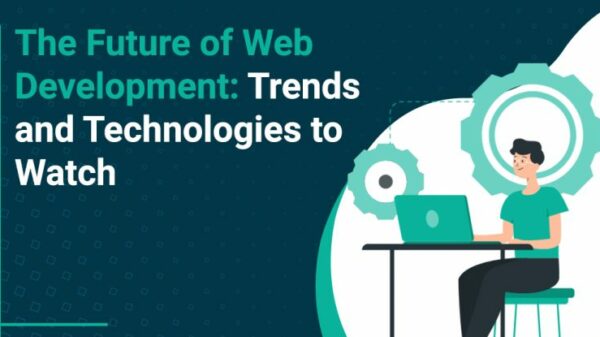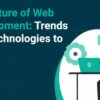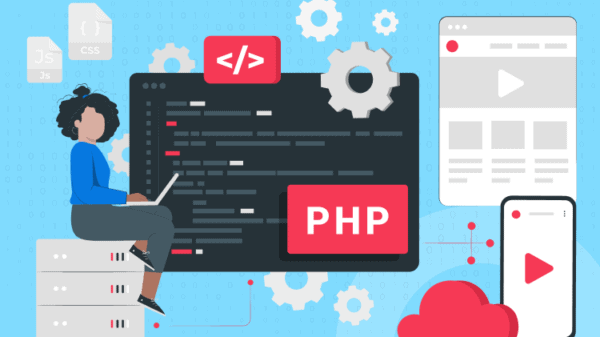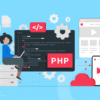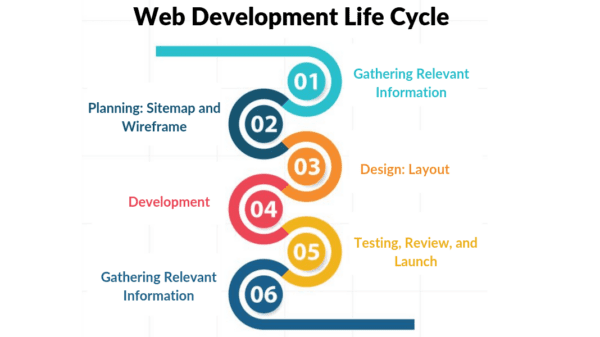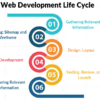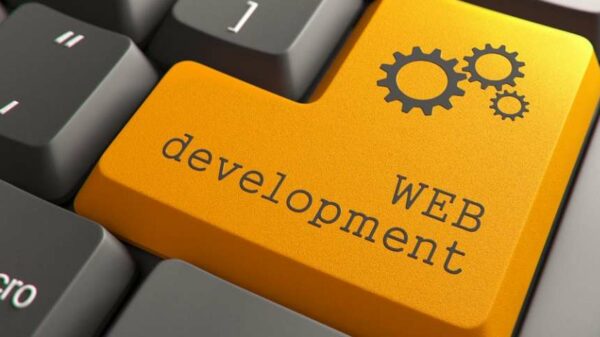IoT or the Internet of Things refers to the network of physical objects or things embedded with sensors, software, and other technology to connect and exchange data. It is a network of interconnected devices that continuously exchange real-time data with each other and background systems using IoT platforms. Users can access data using these IoT platforms and control IoT devices remotely.
Almost all aspects of our daily routines are under the gaze of some digital device and these devices continuously generate data, from several steps, heartbeat, and location to our buying habits and preferences. We have entered into a world of IoT (Internet of Things). IoT keeps us connected to people and various gadgets and has changed how we interact with machines and use them for our benefit. It is estimated that IoT-connected devices will reach 21.5 billion by 2025 as compared to 9.9 billion active connections in 2020.
Websites that have been built using traditional web development methods are not built to handle such huge volumes of data and would find it very difficult to process the continuous and voluminous flow of data.
With IoT web development, websites can be built that can take advantage of cloud networks as data highways between different points. These websites support real-time data as well as instruction exchanges which when coupled with other technologies like AI using big data can provide more advantages and benefits to users. Administrators can gain crucial information using data analytics from the vast volume of data sent by IoT devices while the users can benefit from getting personalized offers designed around their behavior patterns, likes – dislikes, habits etc.
How is IoT Web Development different from Conventional Web Development?
Data Collection and Analysis
IoT is about gathering data from various points and streaming this data to the cloud networks, to use this accumulated big data for analytics to understand user behavior which can help in building better products and processes. The same volume of data if processed through a traditional website would cause disruptions as these websites are not built to handle such volumes of data.
Dynamic User Interface
IoT web development enables developers to build interactive UI with far more additional features than a traditional website. As an example, with voice assistants being added to almost all devices, users can now search for products or view website offerings just by raising queries directly from the microphone buttons on the websites or apps. Such options give users a more dynamic feel about the cloud-based website interfacing with IoT.
Security
While IoT deployment offers tremendous benefits, it also requires sophisticated cybersecurity measures because of its wide network. A single compromised node can cause a ripple effect in the whole network. IoT deployments reduce or eliminate human intervention and focus on automation processes and can be considered more secure than traditional websites. The open web application security project (OWASP) was started in 2014 to address the security concerns that the IoT ecosystem faces. This led to setting out the criteria to design and deploy secure IoT infrastructure helping IoT developers build more secure software.
Scalability
Compared to traditional web development, IoT web development is more scalable and secure because of its cloud-based presence. By its very nature, IoT systems tend to collect massive amounts of data which is streamed continuously to the cloud network. This scalability and stability make IoT web development a very powerful tool compared to traditional website development.
Making Real-Time changes
IoT provides developers with the flexibility to resolve web design and development issues in real-time. Javascript can be used to add and test features using JQuery and Socket.IO. JQuery can be used to update websites as per need. This makes IoT web development an excellent tool for both businesses and development companies.
Low code solutions – Low code solutions have become one of the most popular web technological trends. Low code solutions require fewer processing resources and facilitate simple IoT solutions.
By all estimates, the future of IoT is limitless & combined with AI, Learning, and Analytics opens it up to make science fiction-like ideas a reality. The practical applications for the future of IoT are limitless, and some of these applications are:-
Smart homes
Smart homes are already a reality in 2022, and it is estimated that the smart homes market will increase to USD 205 billion by 2026.
Smart cities
A smart city is an ICT framework (Information and Communication Technologies) created to address urbanization challenges. Connected devices and objects interact with each other in this framework, exchanging data via the cloud network. Connected devices can help people make better decisions, increase comfort, and reduce costs.
Industrial Internet of Things (IIoT)
IIoT applications are already tracking inventory in real-time, monitoring downtime, digitizing the bill of lading, and controlling yields. The next step would be predictive maintenance, to reduce machine downtime.
One of the significant industrial applications is digital twins. This is a virtual representation of a system, object, or process replicating real-time operations. This is expected to grow up to USD 73.245 billion in revenue by 2030.
IoT is a universal technology and its future is limitless and can be incorporated and adapted into any part of work. IoT mobile app development services can assist in developing IoT ecosystems for commercial and other projects.
A professional and security-oriented programmer having more than 6 years of experience in designing, implementing, testing and supporting mobile apps developed. Being techno geek, I love to read & share about the latest updates in technology including but not limited to IoTs, AI, application development, etc. In my free time, I like to play football, watch movies and explore new places. I have been learning mobile app development since 2012. With having a good understanding of programming languages, I develop native as well as web apps for both iOS & Android using latest tools & technologies. I am also having experience in both front-end & back-end development.



















































































































































































